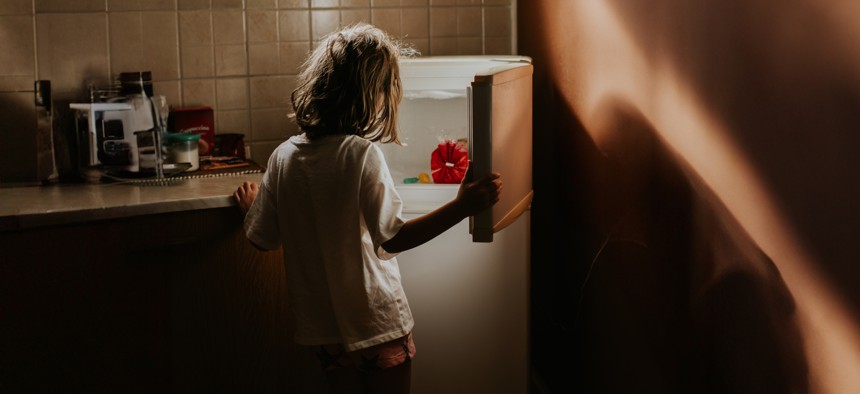2 million women, children risk losing WIC food assistance, study says

Catherine Falls Commercial via Getty Images

Connecting state and local government leaders
Unless Congress increases funding for the program by $1 billion, states will have to start turning people away around March.
Unless Congress increases funding for food assistance by a billion dollars in January, states will be forced to gradually begin turning away low-income women and their children starting around March.
The number of people waitlisted in states for assistance could grow to 2 million through September, according to an analysis released Tuesday by the left-leaning Center on Budget and Policy Priorities. That would be more than a quarter of the total number of women expected to seek help next year amid rising food costs from the Special Supplemental Nutrition Program for Women, Infants, and Children, or WIC.
Like the heads of many state WIC offices, Paul Throne, director of the Washington Office of Nutrition Services, said he feared his state will have to turn women and children away at some point next year.
“We're on the train tracks and the train is coming, and that train is our inability to serve everybody who needs us,” he said during a press call.
The estimate comes as the U.S. Department of Agriculture and states have warned for months that the current level of funding for the program isn’t enough to keep up with the growing demand. Nearly every state is seeing an uptick in applications—even Utah, which has historically served fewer women than others, has seen a rapid increase in women seeking help.
But it is unclear whether Congress will approve more funding for the program. Both the House and Senate appear poised to keep spending at roughly the same levels as last year under the deal they struck in June to increase the debt ceiling.
Already, the two continuing resolutions passed to keep the government open did not increase WIC funding. The Sept. 30 continuing resolution did allow the USDA to give states four months of funding to be used over three months. However, the department warned at the time that as a result of higher spending, it will run out of money unless Congress approves more funds for the program.
The issue is about to come to a head again in a little over a month. After Congress took a “laddered” approach in November’s short-term spending bill, the nation faces a shutdown of parts of the federal government on Jan. 19 unless they are able to reach a spending deal for the remainder of the fiscal year or pass another continuing resolution to prevent the shutdown of several state agencies.
Should Congress again not increase funding for the program, states will not have enough funding to cover all of the women they expect to sign up for the program. As a result, the states will have to start waitlisting some of those applicants. Women who need to reenroll in the program will also have to wait.
The analysis noted that states’ regulations prioritize who is placed on waiting lists.
Initially, most women considered to be a high-priority—“including infants and pregnant or breastfeeding adults”—will get assistance. But “new parents who are not breastfeeding would be the first to be put on waiting lists, followed by children who are at nutritional risk but who have not yet developed a nutrition-related medical condition,” the analysis said.
Over time, the analysis said states would have to start putting even those considered the most important to help on waiting lists. “Even children as young as 1 with a documented medical condition that puts them at risk of nutritional deficiencies could be turned away,” said Ty Jones Cox, the group’s vice president for food assistance during the press call.
There is also the risk that many won’t even apply for the program because they believe they will be turned away. “The harm from these cuts would disproportionately fall on Black and Hispanic families because they face greater economic hardship due to long-standing barriers to housing, education and employment opportunities and other forms of discrimination,” the analysis said.
Sandy Chung, president of the American Academy of Pediatrics, called for more funding. Pediatricians refer families to the program, she said on the call, because it has been “shown to reduce preterm births, increase the likelihood of healthy birth weights, reduce obesity in young children, and reduce racial and ethnic health disparities.” The program, she said, has also increased the number of women who breastfeed by 30%.
“It hurts to think that my patients, families who are struggling to survive, could soon lose access to food for their babies and young children.”
Kery Murakami is a senior reporter for Route Fifty, covering Congress and federal policy. He can be reached at kmurakami@govexec.com. Follow @Kery_Murakami

NEXT STORY: California’s budget troubles are unique—at least for now





